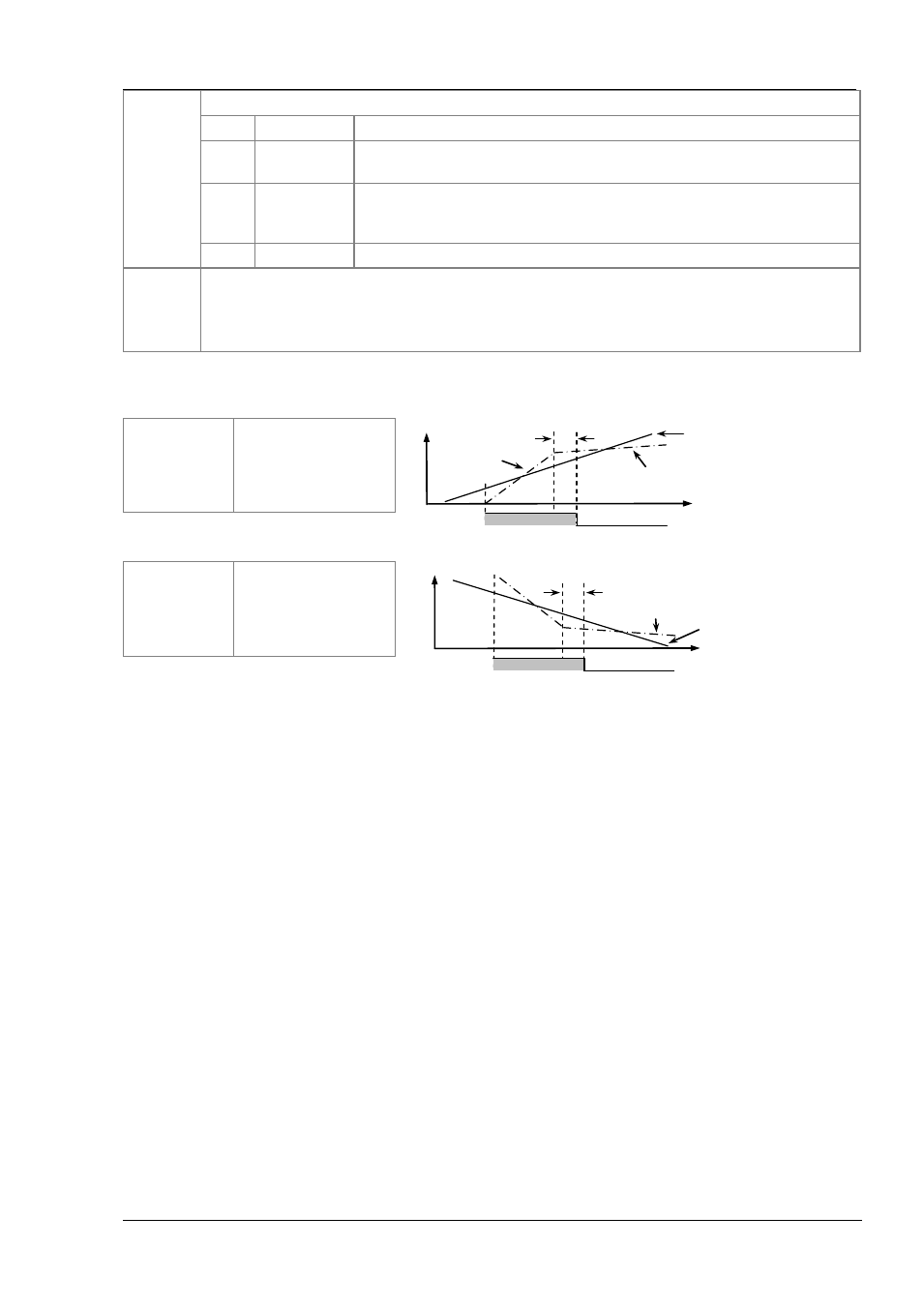Super Systems 3 Series User Manual
Page 63

Series 3
Operations Manual
63
Latching
Alarm
Latching is used to maintain the alarm condition once an alarm has been detected. It may be configured as:
none
Non latching
A non latching alarm will reset itself when the alarm condition is removed
Auto
Automatic
An auto latching alarm requires acknowledgement before it is reset. The
acknowledgement can occur BEFORE the condition causing the alarm is removed.
Man
Manual
The alarm continues to be active until both the alarm condition is removed AND the
alarm is acknowledged. The acknowledgement can only occur AFTER the condition
causing the alarm is removed.
Evt
Event
ALM beacon does not light but an output associated with this parameter will activate.
Blocking
Alarms
The alarm may be masked during start up. Blocking prevents the alarm from being activated until the process
has first achieved a safe state. It is used to ignore start up conditions which are not representative of running
conditions.
A blocking alarm is re-initiated after a setpoint change.
From firmware version 2.11, two rate of
change alarms are available. These are:
Rising rate of
change
(units/minute)
An alarm will be detected
if the rate of change in a
positive direction
exceeds the alarm
threshold
Falling rate of
change
(units/minute)
An alarm will be detected
if the rate of change in a
negative direction
exceeds the alarm
threshold
Alarm OFF
Time
Positive rate of change in set in
engineering units per minute
Hysteresis
Alarm ON
Rate of change
< set rate
Rate of change
> set rate
PV
Rate of change
< set rate
Negative rate of change in set in
engineering units per minute
Hysteresis
Alarm ON
Alarm OFF
Rate of
change
> set rate
PV
Time
